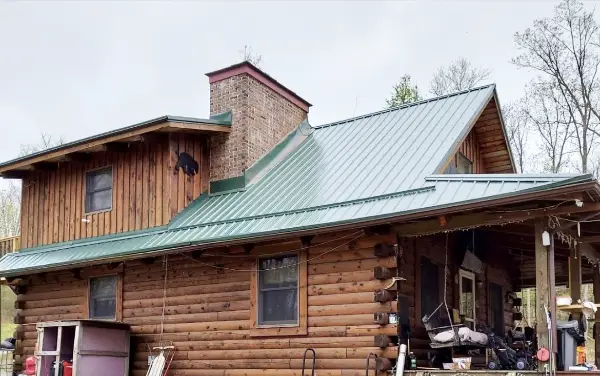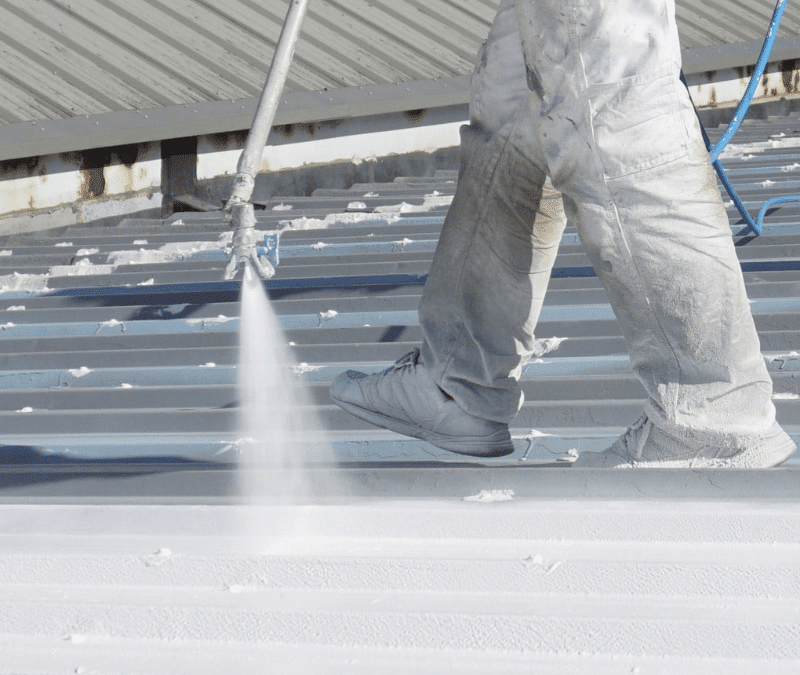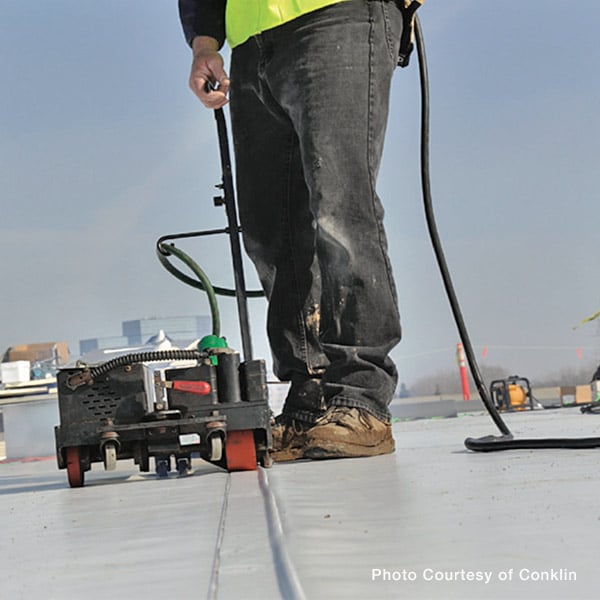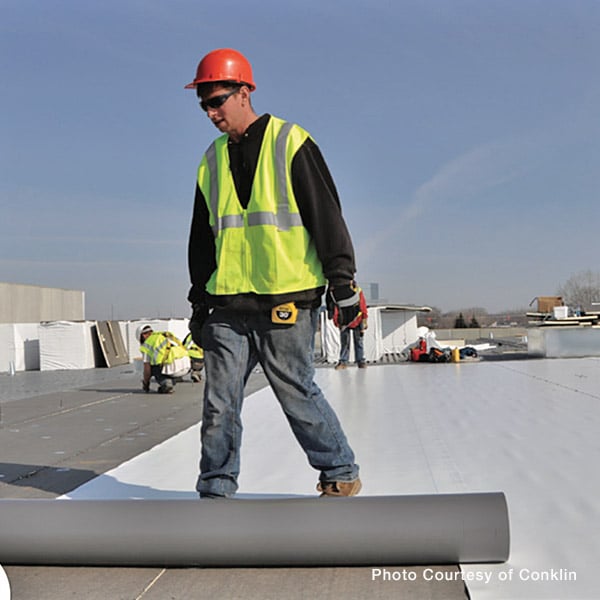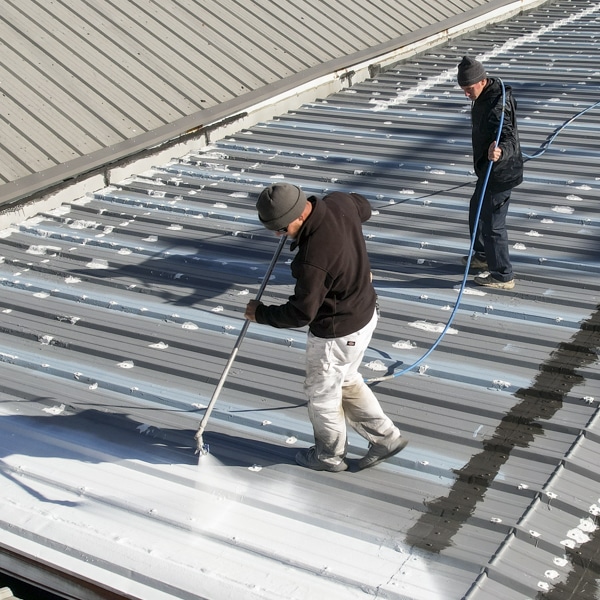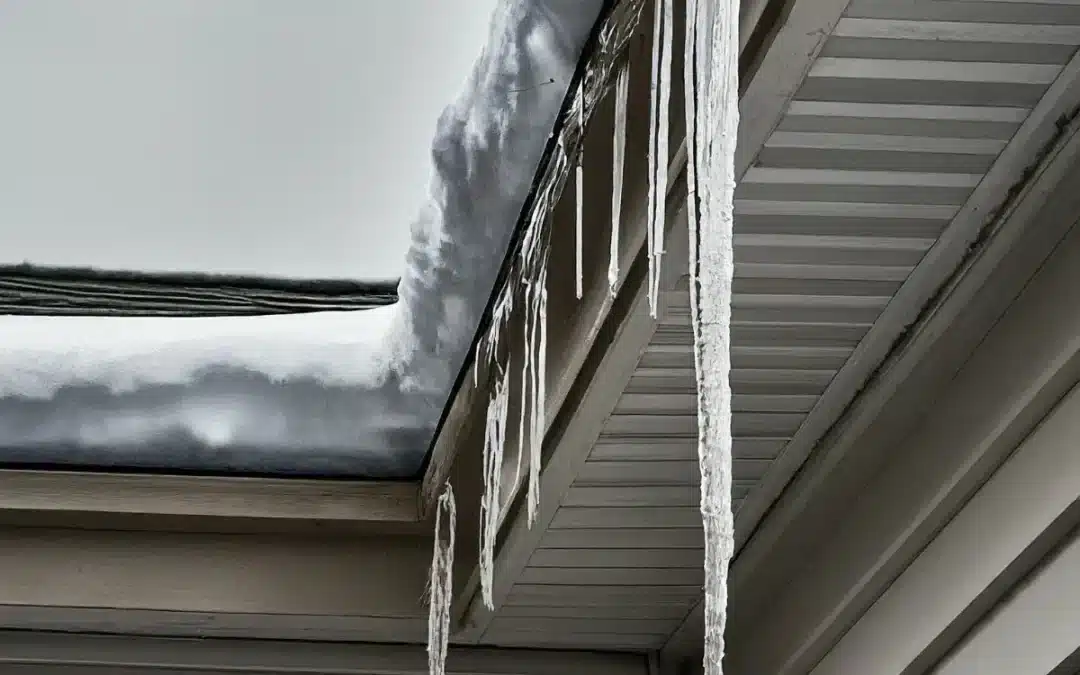7 Benefits of Having a Metal Roof in Pennsylvania
There are several reasons why metal roofs have become increasingly popular in the realm of residential roofing. In the dynamic climate of Johnstown Pennsylvania, metal roofs are exposed to all sorts of tests and trials. Hence, if your metal roof isn’t installed right or prepared for these conditions, you could be signing up for some expensive repairs down the track.
To narrow it down, here are 7 benefits of choosing metal roofing:
- Durability: Metal roofs are known for their longevity and can last 50 years or more with proper maintenance.
- Weather Resistant: Metal roofs are weather resistant, providing durable protection against rain, wind, snow, and hail.
- Energy efficiency: Metal roofs can reflect sunlight, reducing cooling costs in hot climates.
- Low maintenance: Metal roofs require minimal maintenance compared to other residential roofing materials.
- Fire resistance: Metal is non-combustible, making metal roofs more resistant to fire.
- Lightweight: Metal roofing materials are lightweight, reducing the structural load on buildings.
- Environmentally friendly: Metal roofing materials are often made from recycled materials and are themselves recyclable at the end of their lifespan.
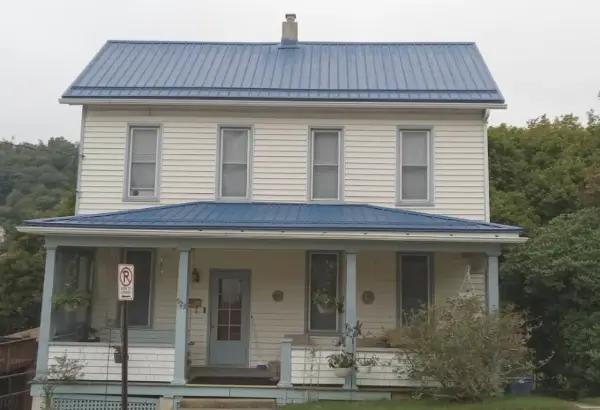
Durability and Weather Resistance
Metal roofing systems have earned a reputation for their unparalleled durability, providing homeowners with robust protection against the elements. Crafted from resilient materials like steel, aluminum, or copper, metal roofs offer exceptional strength and longevity, making them a preferred choice for those seeking long-lasting shelter for their homes.
Withstanding Pennsylvania’s Dynamic Climate
Pennsylvania’s climate is characterized by its dynamic nature, with fluctuating temperatures, heavy rain, snow, and strong winds presenting challenges for traditional residential roofing materials. However, metal roofs excel in such conditions, offering superior resistance to environmental stressors. Their ability to withstand heavy rainfall, snow accumulation, hail, and high winds makes them well-suited for the diverse weather patterns experienced in the region.
Versatility and Adaptability
Metal roofing systems are highly versatile, allowing homeowners to tailor their residential roofs to meet the specific demands of Pennsylvania’s climate. With various profiles such as a standing seam metal roof, various colors and coatings available, homeowners can optimize their metal roofs for energy efficiency, reflectivity, and thermal performance. This versatility ensures that metal roofs can effectively mitigate the effects of Pennsylvania’s changing weather conditions while enhancing the overall durability and longevity of the roofing system.
Protection Against Water Damage
One of the primary concerns in Pennsylvania’s climate is water damage caused by heavy rainfall and snowmelt. Metal roof panels address this issue with their interlocking panel design, creating a tight seal that prevents water infiltration and minimizes the risk of leaks and structural damage. This protection against water damage ensures that homes remain safe, dry, and well-protected, even during the wettest seasons. As a bonus, the mesmerizing sound of rain hitting a metal roof is often sought after. So you won’t have trouble sleeping on a rainy night!
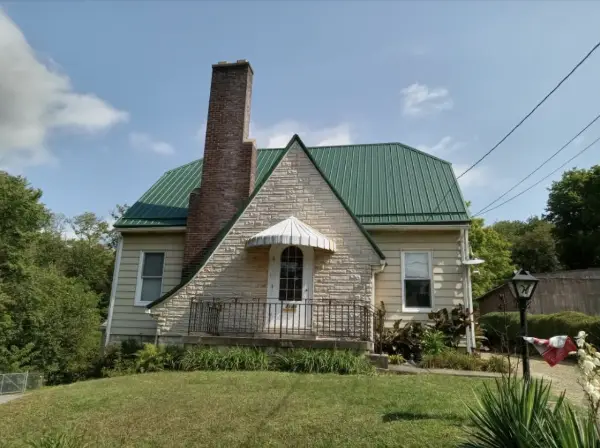
Energy Efficiency
Metal roofs offer excellent energy efficiency benefits, making them a popular choice for homeowners seeking to reduce energy costs and environmental impact. One key advantage of metal roofing is its high solar reflectance, meaning it reflects a significant portion of the sun’s radiation instead of absorbing it as heat. This helps to keep homes cooler in warm climates by minimizing heat absorption.
Additionally, metal roofs can be installed with insulation materials, further enhancing their energy-saving capabilities. This insulation helps to reduce heat transfer between the interior and exterior of the home, maintaining more stable indoor temperatures and reducing the workload on heating and cooling systems.
Furthermore, metal roofs have a long lifespan, often lasting 50 years or more with proper maintenance. Their durability and resistance to weathering ensure that homeowners can enjoy consistent energy savings over the lifetime of the residential roof. With the ability for metal roof panels to reflect sunlight, reduce heat absorption, and provide insulation, they offer an effective solution for improving energy efficiency in homes, leading to reduced energy consumption, lower utility bills, and a smaller environmental footprint.
Low Maintenance
Metal roofs are renowned for their low maintenance requirements, offering homeowners peace of mind and cost savings over time. Unlike traditional roofing materials such as asphalt shingles or wood shakes, metal roofs require minimal upkeep to maintain their structural integrity and aesthetic appeal.
Due to their durable construction, metal roofs are highly resistant to common residential roofing issues such as rotting, warping, or insect damage. They are also non-combustible, providing added protection against fire hazards. Additionally, metal roofs are designed to withstand harsh weather conditions, including heavy rain, strong winds, and hailstorms, without sustaining significant damage.
Moreover, metal roofs do not require frequent cleaning or treatments to prevent mold, mildew, or algae growth, which are common issues with other roofing materials. With proper installation and occasional inspections for signs of wear or damage, metal roofs can provide reliable protection and performance for decades, making them an excellent low-maintenance option for homeowners.
Fire Resistance
Metal roofing is highly regarded for its exceptional fire resistance, providing homeowners with added peace of mind and safety. Unlike traditional roofing materials such as wood shakes or asphalt shingles, metal roofs are non-combustible, meaning they do not contribute to the spread of fire.
Metal roofing materials are typically made from steel, aluminum, or copper, all of which have inherently high fire resistance properties. This makes metal roofs an excellent choice for homeowners living in areas prone to wildfires or those seeking to minimize the risk of fire damage to their property.
Furthermore, metal roofs are often installed with interlocking panels and sealed seams, creating a tight, protective barrier that helps prevent embers from infiltrating the residential roof space. Additionally, metal roofs are less susceptible to ignition from sources such as lightning strikes or nearby sparks, further enhancing their fire-resistant qualities. Overall, metal roofing offers homeowners a durable and reliable solution for protecting their homes against fire hazards.
Lightweight
Metal roofing is prized for its lightweight nature, making it an ideal choice for residential and commercial properties alike. Compared to traditional roofing materials like asphalt shingles or clay tiles, metal roofs are significantly lighter, reducing the structural load on buildings and allowing for easier installation. This lightweight characteristic also makes metal roofing an excellent option for retrofitting existing structures without requiring additional reinforcement. Additionally, the reduced weight of metal roofing contributes to its durability and longevity, as it places less stress on the building’s framework and foundation over time. Overall, the lightweight nature of metal roofing offers numerous benefits in terms of installation ease, structural integrity, and long-term performance.
Environmentally Friendly
Metal roofing stands out as an environmentally friendly choice, offering numerous sustainability benefits throughout its lifecycle. Firstly, metal roofing is often made from recycled materials, such as steel or aluminum, reducing the need for raw resources and diverting waste from landfills. Additionally, metal roofs have a long lifespan of 50 years or more, significantly longer than traditional roofing materials like asphalt shingles, reducing the frequency of replacements and associated environmental impact.
Moreover, metal roofing is fully recyclable at the end of its life, ensuring that the materials can be repurposed rather than discarded. This closed-loop recycling process further minimizes waste and conserves natural resources. Moreover, metal roofs are highly energy efficient, reflecting sunlight to reduce heat absorption and cooling loads in buildings. This lowers energy consumption and greenhouse gas emissions associated with heating and cooling systems, contributing to a smaller carbon footprint.
Overall, metal roofing offers a sustainable and eco-friendly residential roofing solution that aligns with modern environmental priorities, making it an excellent choice for environmentally conscious homeowners and businesses.
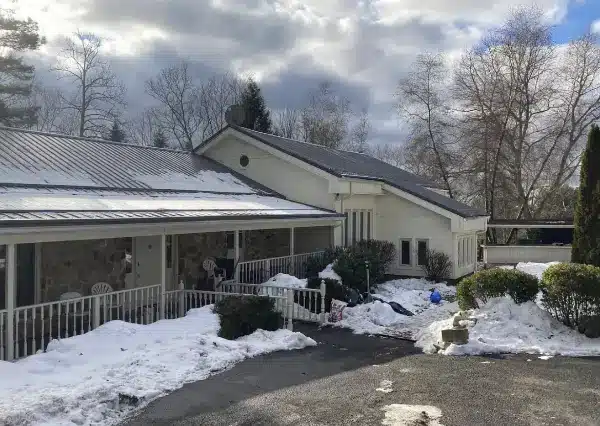
The 5 Downsides of Metal Roofing
Whilst metal roofing is a great option for your home, every option has its downsides. Its important for you to know the cons of metal roofing so you can consider whether or not it is the right choice for you.
- Cost
Metal roofing will save you countless money when you take into consideration its energy efficiency and low maintenance. However, for those that have a tight budget, the upfront cost of metal roofing is more expensive than traditional roofing options. Despite this, in a climate such as Pennsylvania’s where weather is diverse and unpredictable, a properly installed metal roof is a wise investment.
- Noise
In comparison to other roofing options, metal roofs can reverberate more and may not insulate the house from the sounds of loud rain and hail if they are not installed properly. This emphasizes the importance of selecting an experienced roofing contractor who can install metal roofing properly. This ensures that there are no leakages or loose sheets that may negatively impact your comfort inside the home.
- Denting
Metal roofing can be susceptible to denting from falling debris or hailstorms, although occurrences are rare. While newer metal roofing materials are engineered for durability, occasional dents may occur. However, proper installation and maintenance can help minimize the risk of dents and maintain the roof’s integrity.
- Expansion and Contraction
Metal roofs can expand and shrink when temperatures change. This movement can strain the connections and seams, causing them to loosen over time. If not addressed, this may lead to leaks. Proper installation and regular maintenance can help prevent these issues and keep the residential roof in good condition.
- Leaks
Improper installation of metal roofing can create weak spots and gaps where water can seep through, leading to leaks. Without proper sealing and fastening, water infiltration can occur, causing damage to the roof structure and interior of the building. Professional installation by experienced roofers is essential to prevent leaks.
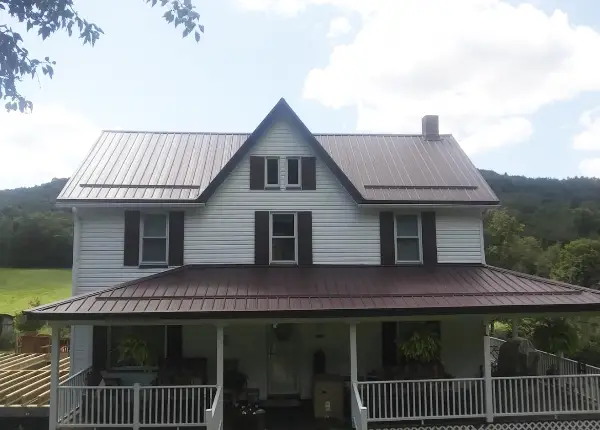
Residential Roof Replacement in Pennsylvania
Lester’s Carpentry specializes in residential roof replacement and maintenance services tailored to metal roofing systems. With years of experience and expertise, our team ensures top-notch installation, using high-quality materials such as Conklin’s roof coating solutions to replace old or damaged residential roofs. We also offer comprehensive maintenance programs to keep metal roofs in optimal condition, including inspections, repairs, and preventive measures to address potential issues before they escalate. Whether you want a standing seem metal roof, or we’re fixing leaks, replacing damaged panels, or addressing rust and corrosion, our skilled technicians provide efficient and reliable solutions to prolong the lifespan of metal roofs and enhance their performance. As a registered contractor, homeowners can trust in our commitment to delivering exceptional service and ensuring the durability and longevity of their metal roofing investment, protecting their homes from the elements, and preserving their value for years to come.

